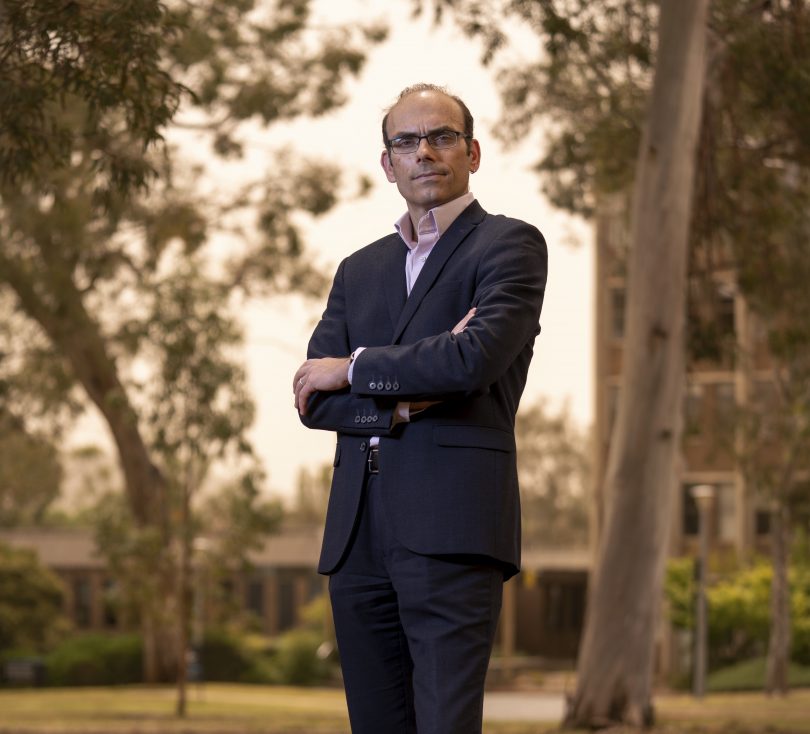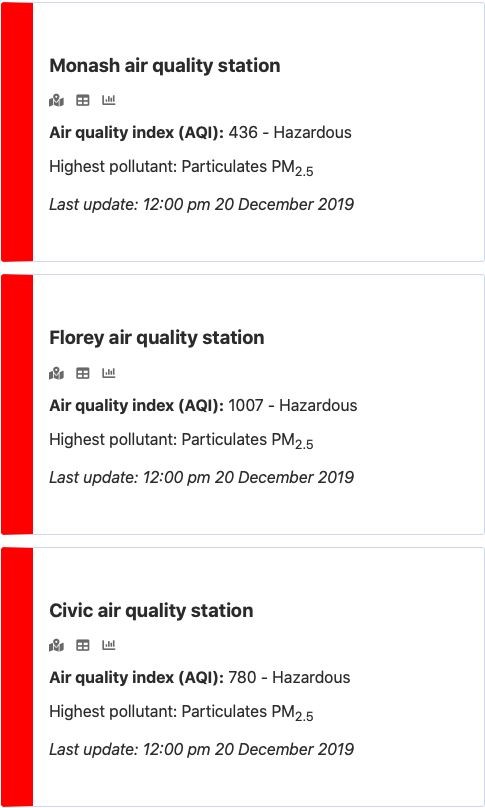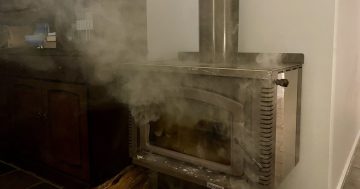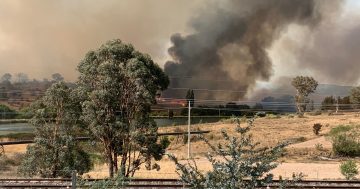
Professor Sotiris Vardoulakis from the ANU Research School of Population Health says exposure to bushfire smoke is “like smoking a few cigarettes a day”. Photo: Lannon Harley, ANU.
Leading environmental health expert from the ANU Professor Sotiris Vardoulakis says advice to stay indoors and reduce strenuous physical exercise outdoors is impractical for dealing with long-term exposure to bushfire smoke.
The warning from Professor Vardoulakis comes as Canberra’s air quality was measured at 500 per cent worse than the hazardous threshold on 20 December.
Bushfire smoke contains fine particles, also called PM2.5 (or particulate matter) that irritate the respiratory system and can have serious health effects. A reading of 200 is classified as ‘hazardous’. Air quality on 20 December showed particulate matter levels ranging from above 400 PM2.5 to over 1000 at Florey.
Professor Vardoulakis says people should learn about PM2.5 levels and become accustomed to checking air pollution readings, particularly during the bushfire season.
While studies are yet to conclude what constitutes long-term exposure to particulate matter, he said there was no safe level of exposure to bushfire smoke.
“More nuanced advice that encourages individuals to be guided by air quality forecasts and the pattern of PM2.5 levels is needed,” Professor Vardoulakis said.
“People need to not only understand this information but also use it to plan their daily activities in a way that minimises their exposure to pollution.”

Air quality levels in Canberra on 20 December. Image: ACT Health.
He said people can use bushfire smoke alerts, real-time air quality data and forecasts, and related health advice to reduce exposure to hazardous air pollution.
“Bushfire smoke is a major public health concern. These very small particles in bushfire smoke can penetrate deep into the respiratory system inducing inflammation and even translocate into the bloodstream,” said Professor Vardoulakis.
“Mortality rates have been found to increase in Sydney on days with high bushfire smoke pollution.
“For most people, it is like smoking a few cigarettes a day – it is increasing the risk of developing lung and heart disease in their lifetime.
“But some people, such as those with asthma, the elderly, young children and pregnant women, are at a higher risk and it is important to know how to minimise their exposure to air pollution.”
Although he says there is no safe level of exposure to PM2.5, Professor Vardoulakis noted there were certain times of the day in Sydney when the levels were lower than 25 micrograms per cubic metre.
“In early December, PM2.5 levels were lower in most locations in Sydney in the early morning,” he said.
“Exercising outdoors, and cycling or walking to school or work within this time-window, if possible, would help maintain good physical activity levels without substantially increased exposure to smoke.
“However, if you are pregnant, elderly or have a pre-existing respiratory condition, it will be important to avoid exposure.”
Professor Vardoulakis says his research shows some Australian homes are “leaky” and bushfire smoke is able to penetrate indoors and it is also able to pass through ill-fitting facemasks.
“Facemasks are not the best option,” he said.
“Their effectiveness depends on the make and the fit. Surgical masks often have a poor facial fit and professional P2/N95 facemasks aren’t comfortable to wear over prolonged periods or made for children,” he said.
“Planning our daily activities to reduce exposure to outdoor pollution, and creating a clean air space in our own homes by keeping doors and windows shut and using an air purifier with a high-efficiency particulate air filter (HEPA) is probably the best option for most families.
“As the climate in Australia is becoming hotter and drier, we need to be prepared for more extreme bushfires and days with very poor air quality ahead,” he said.














